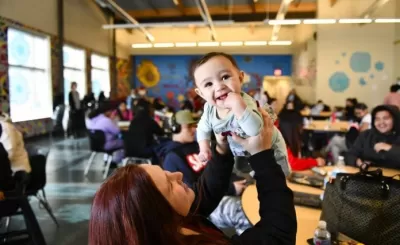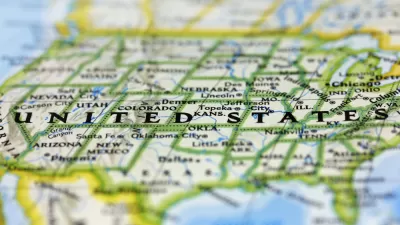Community land trusts, better known for permanently affordable housing, expand into commercial spaces for a wide range of reasons, and in a wide range of ways.

Ten years ago, Shelterforce editor Miriam Axel-Lute took a deep dive into what was then a somewhat uncommon use for community land trusts (CLT)—commercial space. In communities such as San Francisco, New Orleans, and Albuquerque, local stakeholders were evaluating whether existing community land trusts should take on commercial properties (and if so how), and if a new commercial-focused CLT would make sense.
Community land trusts are a form of community control of land by which land is held in trust in perpetuity for community benefit, even when buildings on the land are sold. Though the very first community land trust was primarily a working farm, for most of the time since then community land trusts in the United States have been primarily focused on providing stable, permanently affordable housing.
When a community land trust develops housing for homeownership, the CLT retains ownership of the land, and sells only the house, typically with a 99-year ground lease. The sale contract also includes an agreement on a resale formula so that when the homeowner eventually sells, they have accumulated some assets. But the home also stays affordable to another household of the same income. The model balances affordability with asset building, and is designed to benefit residents as well as maintain inclusive, stable neighborhoods.
“Theoretically and practically the community land trust mechanism for preserving the availability and often the affordability of commercial properties works the same as for residential, or at least it can work that way,” says Mike Brown, a partner in Burlington Associates, a national consulting cooperative that helps nonprofit corporations develop real estate. “The goal is to assist established businesses that just need access to space, and use the classic CLT model—where the business owner owns the building, and the CLT owns and leases the land—which then hopefully allows that business to remain successful over time.” Such a model, says Brown, can support more entrepreneurship in a community. “It may be able to launch [small businesses] to transition out of that space, and that space then remains available and affordable and you start the process all over again with another incoming business.”
CLTs may also be operating commercial spaces primarily for income, to support certain kinds of community uses and needs, or to support various types of business owners and organizations.
Shelterforce checked in with some of the communities featured in our 2011 article, as well as one other trust that operates a lot of commercial spaces, to see what happened to their plans and how the idea has evolved. While all of them have the basic CLT model in place—ownership in the land—each looks at their role in and reasons for offering commercial or office space quite differently.
...
FULL STORY: CLTs Still Going Commercial—Nonprofit Offices, Hairdressers, and a Sausage Factory

Montreal Mall to Become 6,000 Housing Units
Place Versailles will be transformed into a mixed-use complex over the next 25 years.

Planetizen Federal Action Tracker
A weekly monitor of how Trump’s orders and actions are impacting planners and planning in America.

DARTSpace Platform Streamlines Dallas TOD Application Process
The Dallas transit agency hopes a shorter permitting timeline will boost transit-oriented development around rail stations.

Interactive Map Reveals America's “Shade Deserts”
Launched by UCLA and American Forests to combat heat-related deaths, the tool maps the shade infrastructure for over 360 U.S. cities.

Bicycles and Books — In Sacramento, Libraries Now Offer Both
Adult library card holders can check out e-bikes and e-trikes for up to one week.

Colorado Landfills Emit as Much Pollution as 1M Cars
Landfills are the third-largest source of methane pollution in Colorado, after agriculture and fossil fuel extraction.
Urban Design for Planners 1: Software Tools
This six-course series explores essential urban design concepts using open source software and equips planners with the tools they need to participate fully in the urban design process.
Planning for Universal Design
Learn the tools for implementing Universal Design in planning regulations.
City of Mt Shasta
City of Camden Redevelopment Agency
City of Astoria
Transportation Research & Education Center (TREC) at Portland State University
US High Speed Rail Association
City of Camden Redevelopment Agency
Municipality of Princeton (NJ)




























